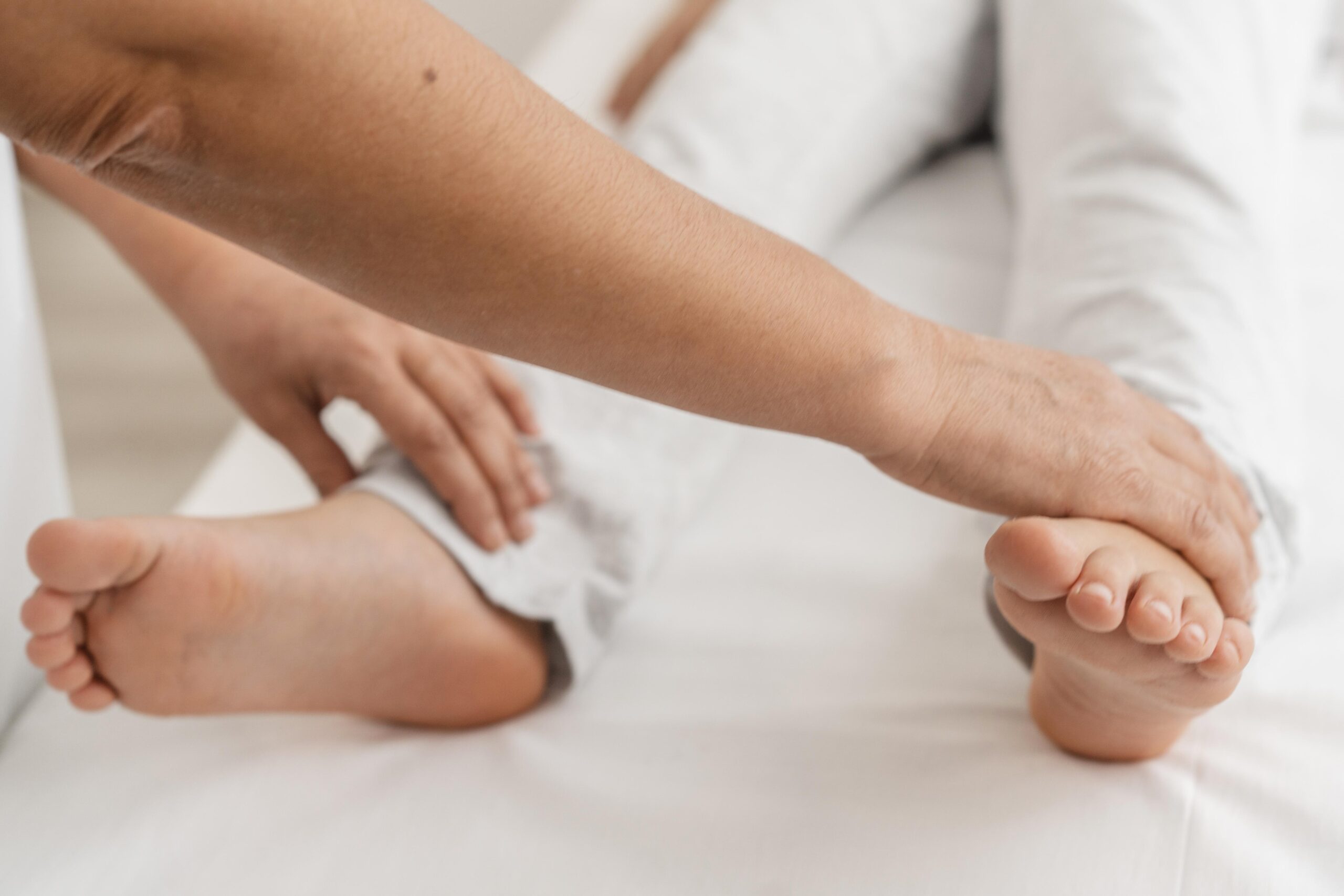Foot pain is a widespread issue that affects millions of people worldwide. Whether it’s a minor discomfort from standing for long hours or chronic pain caused by conditions like plantar fasciitis, the impact of foot pain can significantly affect your daily life. Fortunately, foot pain treatment options are available at every level, from simple home remedies to more advanced professional care. In this comprehensive guide, we’ll explore effective strategies to manage and relieve foot pain, helping you regain comfort and mobility.
Understanding Foot Pain: Common Causes and Symptoms
Before diving into foot pain treatments, it’s important to understand the underlying causes of foot pain. Foot pain can result from a variety of conditions, each presenting different symptoms and requiring different treatment approaches. Some common causes of foot pain include:
Plantar Fasciitis
Plantar fasciitis is one of the most common causes of heel pain. It occurs when the thick band of tissue (the plantar fascia) that runs along the bottom of the foot becomes inflamed. This condition typically causes sharp pain in the heel, especially when taking the first few steps in the morning.
Achilles Tendonitis
Achilles tendonitis involves inflammation of the Achilles tendon, which connects the calf muscles to the heel bone. It typically causes pain, stiffness, and swelling at the back of the heel, especially during physical activity.
Bunions
Bunions are bony bumps that form on the joint at the base of the big toe, often causing the toe to angle inward. They can lead to significant discomfort, especially when wearing tight shoes.
Flat Feet
Flat feet occur when the arches of the feet collapse, causing the feet to make full contact with the ground. This condition can lead to pain in the feet, knees, and lower back.
Morton’s Neuroma
Morton’s neuroma is a painful condition caused by a thickening of tissue around a nerve, often between the third and fourth toes. It results in sharp, burning pain, tingling, or numbness in the toes.
Metatarsalgia
Metatarsalgia refers to pain and inflammation in the ball of the foot. This condition is often caused by overuse, wearing high heels, or conditions like arthritis.
Arthritis
Arthritis, particularly osteoarthritis and rheumatoid arthritis, can cause joint pain, swelling, and stiffness in the feet, leading to difficulty walking and performing everyday activities.
Foot Pain Treatment: Home Remedies for Relief
When dealing with foot pain, many people can find relief with simple and cost-effective home remedies. These treatments are especially effective for mild to moderate pain and can help manage discomfort until more advanced care is needed.
Ice Therapy
Ice therapy is one of the simplest and most effective ways to reduce inflammation and numb pain. Apply an ice pack or frozen gel pack to the affected area for 15–20 minutes at a time, several times a day. Ice therapy is especially useful for conditions like plantar fasciitis, Achilles tendonitis, and metatarsalgia, as it helps reduce swelling and alleviate pain.
Epsom Salt Soak
Epsom salt contains magnesium, which can help relax muscles and reduce inflammation. Soaking your feet in a warm Epsom salt bath for about 20 minutes can relieve discomfort caused by conditions like arthritis, metatarsalgia, and general fatigue. To prepare the soak, simply dissolve 1–2 cups of Epsom salt in a basin of warm water.
Foot Stretching and Strengthening Exercises
Stretching exercises can help alleviate foot pain by improving flexibility and relieving tension in the muscles and tendons. Some effective stretches for foot pain include:
- Plantar Fascia Stretch: Sit with one leg over the other and gently pull the toes of the affected foot toward your shin. Hold the stretch for 30 seconds and repeat 2–3 times.
- Calf Stretch: Stand facing a wall with one leg in front of the other. Keep your back leg straight and bend your front knee to stretch the Achilles tendon. Hold the stretch for 30 seconds and repeat 2–3 times on each leg.
Strengthening exercises can also help improve foot stability and prevent future injuries. For example, towel scrunches and toe curls can help strengthen the muscles in the feet and toes, while ankle rotations and heel raises can improve lower leg strength.
Foot Massage
Massaging your feet can help reduce muscle tension, improve circulation, and provide temporary relief from foot pain. You can either perform a self-massage or seek the help of a professional massage therapist. Focus on the areas that feel tight or painful, using gentle pressure and circular motions to release tension. Massaging the arches, heels, and the balls of the feet can be especially helpful for conditions like plantar fasciitis and metatarsalgia.
Proper Footwear
Wearing the right shoes is essential for preventing and treating foot pain. Shoes with proper arch support, cushioning, and a good fit can reduce pressure on the feet and minimize pain. Avoid wearing high heels or shoes that are too tight, as they can exacerbate conditions like bunions, plantar fasciitis, and flat feet.
If you have flat feet or specific foot conditions, custom orthotics or over-the-counter insoles can provide additional support. Orthotics help distribute weight evenly across the foot, reducing the strain on problem areas and improving overall alignment.
Over-the-Counter Foot Pain Treatment
If home remedies aren’t enough to alleviate foot pain, over-the-counter (OTC) treatments can provide additional relief. These treatments can be effective for managing pain and inflammation and improving mobility.
Pain Relief Medications
Nonsteroidal anti-inflammatory drugs (NSAIDs) such as ibuprofen and naproxen are common OTC medications that can help reduce inflammation and relieve pain. NSAIDs are especially useful for conditions like plantar fasciitis, Achilles tendonitis, and arthritis. However, they should be used sparingly and according to the directions on the label, as long-term use can lead to side effects like stomach irritation.
Topical Pain Relief Creams
Topical creams and gels containing menthol, lidocaine, or capsaicin can provide targeted pain relief. These products work by either numbing the affected area or creating a cooling or warming sensation that helps to alleviate pain. Topical treatments are ideal for localized pain caused by conditions like metatarsalgia, arthritis, or neuropathy.
Insoles and Arch Supports
If you experience chronic foot pain due to flat feet, overpronation, or poor foot alignment, custom orthotics or over-the-counter insoles can provide relief. Insoles help cushion the feet, absorb shock, and provide additional support, reducing pressure on the feet and joints. Depending on your specific condition, insoles can help alleviate pain and improve mobility.
Professional Foot Pain Treatment Options
When foot pain becomes chronic or severe, it may be time to seek professional care. A podiatrist or orthopedic specialist can assess your condition and recommend a tailored treatment plan to address the root cause of your pain.
Physical Therapy
Physical therapy is an excellent option for individuals suffering from chronic foot pain. A physical therapist can teach you exercises to improve flexibility, strengthen the muscles in your feet, and correct any imbalances in your gait. In some cases, a therapist may use modalities like ultrasound or electrical stimulation to reduce inflammation and promote healing.
Physical therapy can be particularly beneficial for conditions like plantar fasciitis, Achilles tendonitis, and metatarsalgia, as it helps improve strength and flexibility in the feet and lower legs, preventing future injuries.
Corticosteroid Injections
For more severe pain, corticosteroid injections can provide powerful relief. These injections are typically used for conditions like plantar fasciitis, Achilles tendonitis, or arthritis when other treatments have not been effective. Corticosteroids reduce inflammation and pain, offering relief that can last for weeks or even months. However, these injections should be used with caution, as repeated use can weaken the tendons and tissues over time.
Surgery
In rare cases, surgery may be necessary if other treatments fail to provide relief. Surgical options depend on the underlying cause of the foot pain. For example, surgery may be recommended to correct structural issues like bunions or hammertoes, remove bone spurs, or repair torn tendons. Surgery is generally considered a last resort when all other treatment options have been exhausted.
Preventing Future Foot Pain
While treating existing foot pain is essential, preventing future pain is equally important. By incorporating these preventive measures into your daily routine, you can maintain foot health and reduce the risk of future injuries.
Maintain a Healthy Weight
Excess weight can place additional stress on the feet, leading to pain and discomfort. Maintaining a healthy weight through a balanced diet and regular exercise can help reduce strain on the feet and improve overall joint health.
Regular Foot Exercises
Incorporating regular foot exercises into your routine can help keep the muscles, tendons, and ligaments in your feet strong and flexible. Regular stretching and strengthening exercises can reduce the risk of developing foot pain from conditions like plantar fasciitis and Achilles tendonitis.
Choose Proper Footwear
Investing in high-quality shoes that offer support, cushioning, and a good fit is one of the best ways to prevent foot pain. Make sure your shoes provide enough arch support and cushioning, especially if you spend long periods on your feet or have a specific foot condition like flat feet or high arches.
Conclusion: Find Relief with Foot Pain Treatment
Foot pain can be debilitating, but with the right foot pain treatment, you can find lasting relief and return to an active lifestyle. From simple home remedies like ice therapy and stretching to professional care such as physical therapy and injections, there are numerous effective ways to manage and treat foot pain. By understanding the cause of your pain and taking proactive steps to address it, you can reduce discomfort and prevent future foot issues.
If your foot pain persists or worsens, don’t hesitate to consult a healthcare professional for personalized treatment options. With the right approach, you can say goodbye to foot pain and enjoy lasting comfort and mobility.



